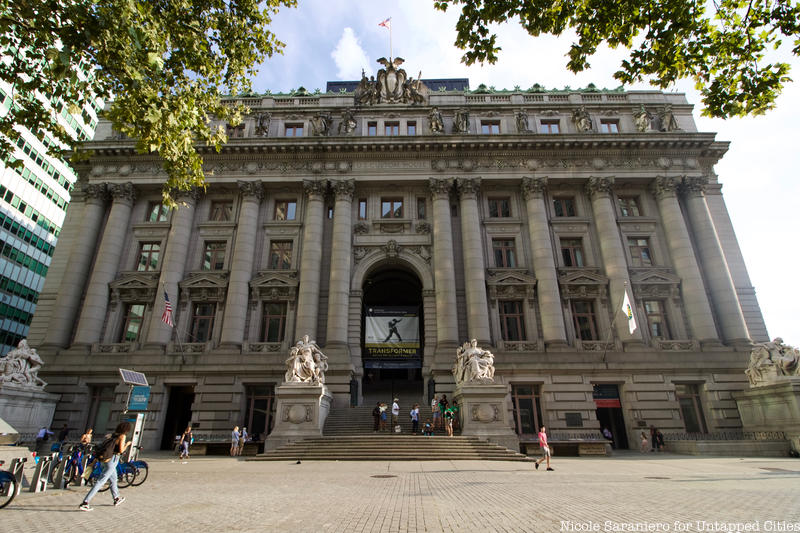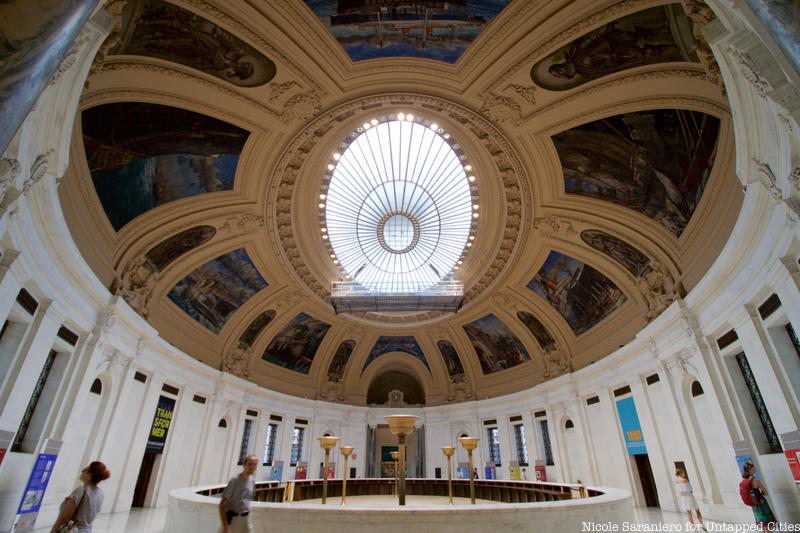2. Alexander Hamilton U.S. Custom House

The Alexander Hamilton U.S. Custom House, which was responsible for the collection of duties on imported goods, was commissioned by the U.S. Government in 1892. The Port of New York was the preeminent seaport in the country at the time, and the grandeur of the building was a tribute to its prosperity. The architect, Cass Gilbert, designed the seven-story building to be a monument to the emergence of the United States as a great commercial power. Because trade at the time relied so heavily on sea voyage, the interior of the building is decorated with shells, marine creatures, tridents, and other symbols of the sea. Interestingly, however, Gilbert chose to have the building face away from the water.

Inside the custom house is the great rotunda, constructed by Rafael Guastavino, with a large skylight at its center. Encircling the rotunda are a series of frescoes, painted by Reginald Marsh, trace the course of a ship as it enters New York Harbor and docks at the pier to unload. Between these panels are portraits of the great early explorers of America. These murals, which were not part of the original design, were added in 1937 as part of the Works Progress Administration.
Today, the Alexander Hamilton U.S. Custom House, located at 1 Bowling Green is home to the Museum of the American Indian and services connected to U.S. Customs and Border Control (such as a Global Entry office).





